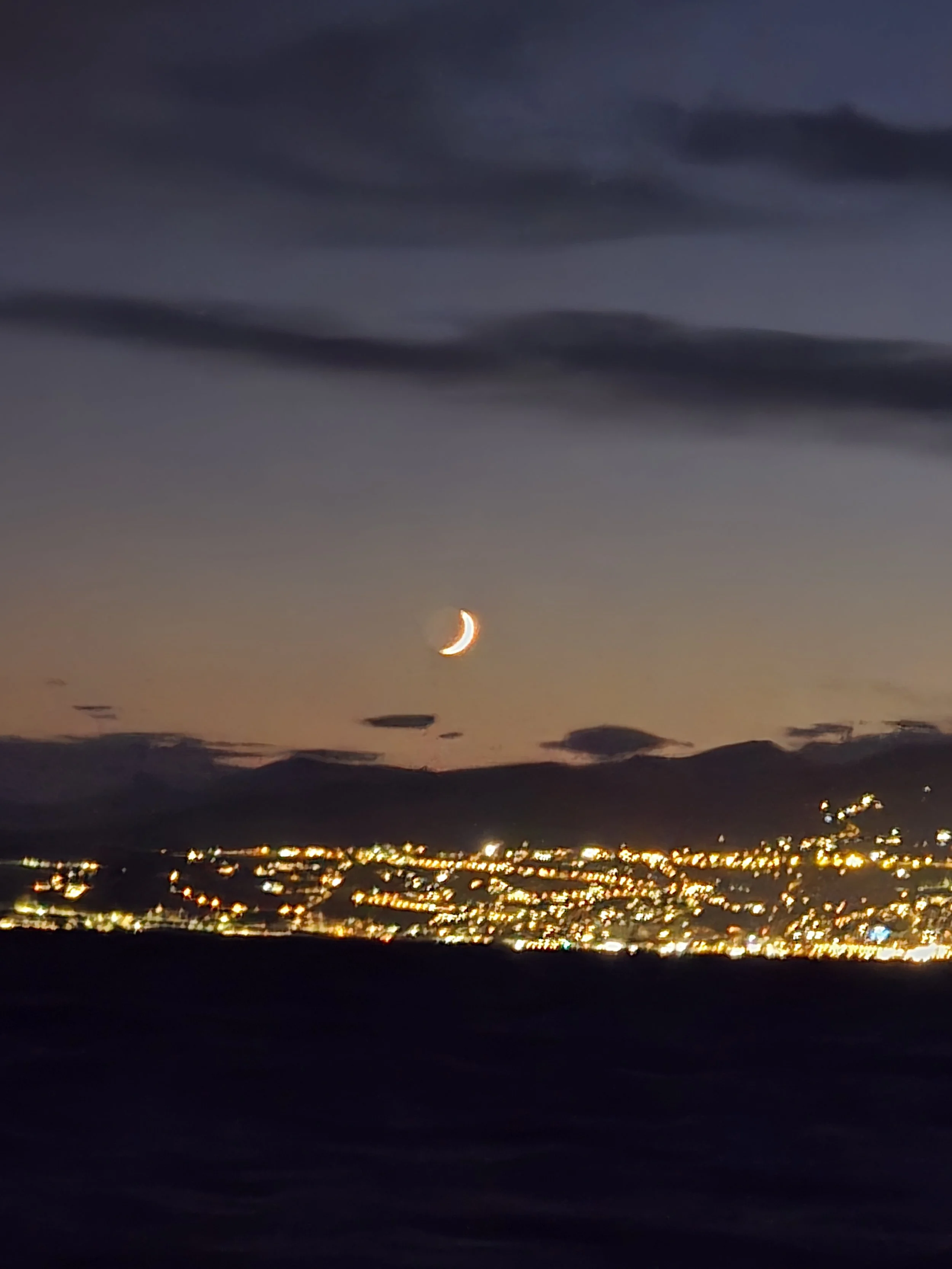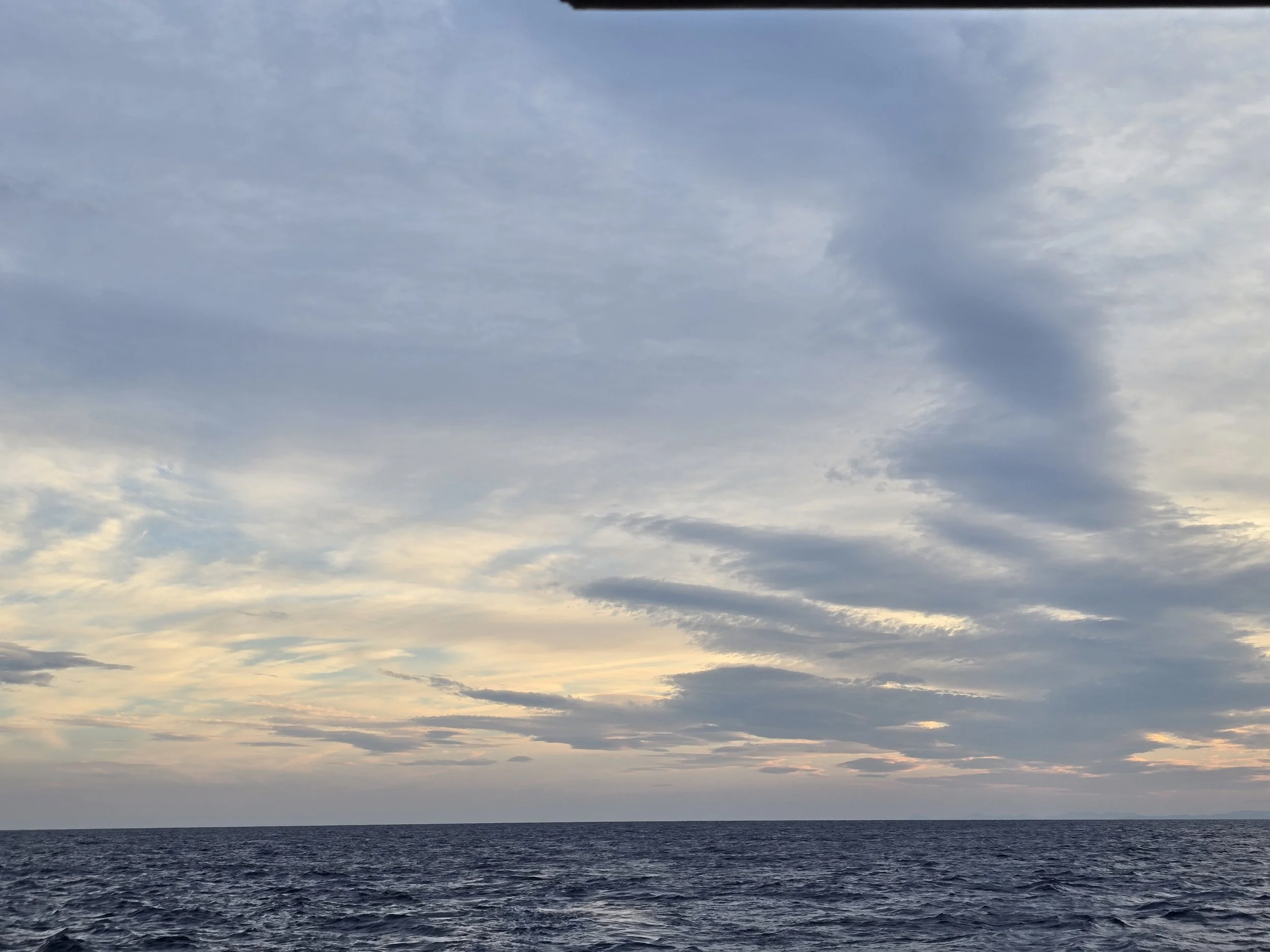
Luna’s Maiden Voyage
Port-Cros to Genoa
150NM | 18 hours
Leaving Port-Cros
I didn’t want to leave this place. I cried just thinking about it. We slipped off mooring GU1 just before noon, the cliffs of Port-Cros noisy with cicadas. That first idyllic stop had spoiled us—clear water, zero crowds, starry nights, and the kind of peace that makes you forget the world beyond the anchorage.
But we had a deadline. Termodinamica was waiting in Genoa to install our solar-powered AC (which, as Hugh explained, is a game-changer for tropical cruising since it runs entirely off our batteries).
Despite my reluctance, there was a natural high leaving the mooring. After a full night’s rest, we were ready for another overnighter—this time to finish the second leg of the journey. And what a glorious day to be traveling by water: bright sunshine with a perfect tailwind pushing us in the right direction. There’s something so magical about moving through the world with your home beneath you.
Coastal Crawl
The first few hours were pure magic. The weather was flawless, and Luna handled like she was showing off. We coasted past southern France’s most desirable playgrounds—St. Tropez’s glamorous villas, Cannes’ celebrity-studded Croisette, Nice’s sweeping bays, before marveling at Monaco, the tiny sovereign city clinging to cliffs like a giant barnacle. Somehow, 38,000 residents thrive in just 0.78 square miles, their terra-cotta rooftops stair-stepping down to a harbor so dense with boats it looked like a mosaic from our vantage point.
Then came the dolphins—not just passing by, but surfing alongside us. They matched Luna’s speed perfectly, riding the swells as if we were all playing the same game. Their silver bodies sliced through the water just feet from our hulls, disappearing under the deep blue water only to leap ahead like they were showing us how it’s done. For a few glorious minutes, we weren’t just watching wildlife; we were part of their pod, all of us carried by the Mediterranean’s endless blue.
Then, right on schedule near Nice, the wind pulled a U-turn. One minute we had 18 knots at our back, pushing us toward Italy; the next, we were pounding into headwinds. I watched the anemometer spin 180 degrees in minutes—a textbook wind reversal (kinda cool).
Our planned route took us straight to Imperia, Italy. If we could reach it before 5pm, we'd avoid the worst of the building headwinds. That deadline dictated everything: our noon departure from Port-Cros, our decision to hug the coastline where the cliffs blocked the swell. And it worked—Luna sliced through the confused seas like she'd done this dance before.
Night Shift
As our third sunset bled into twilight with peach and lavender painting the sky, we prepped for the overnight run. Three-foot waves kept Luna in a gentle roll—not the brutal 6-8 foot swells of our Canet passage, but choppy enough to demand attention. The coastline glow provided the perfect backlight to spot every hazard: crab trap buoys bobbing like drunken fireflies, half-submerged mooring balls, and the occasional unlit sea bouys.
We fell into the rhythm of night sailing—Hugh monitoring instruments while I strained my eyes against the black water, knowing anything we’d see would likely be a danger, not a delight. The Italian coastline turned into a light show—cars snaking along shore roads, spotlights scanning the sky from some party, massive churches lit up against the black mountains. That new-boat adrenaline still thrummed through us, making sleep impossible despite our exhaustion. When you’re riding the high of your dream vessel, even routine vigilance feels like part of the adventure.
The flybridge at night is a world of extremes—wind screaming through the enclosure, engines growling below, darkness so thick it feels like we're plowing through an inkwell. Yet above us, the universe puts on its greatest show: stars so dense and bright they cast faint shadows on the deck, the Milky Way a spilled river of light across the black.
During that first brutal passage from Canet, when 6-foot swells sent spray over the bows, even a quick trip below became a heart-pounding calculation. We developed our own shorthand between the celestial beauty and mortal danger: “Going down for a break—back in fifteen." or "Coffee run. Three minutes max." Every unaccounted-for second stretched into nightmares. Would the next wave be the one that took you over the side? Would the stars be the last thing you'd see before the sea swallowed you whole? That primal fear never left us, not even when the heavens dazzled.
Solution: We repurposed our docking headsets. Now if one of us leaves the flybridge at night, we stay on comms. (This system got tested when Hugh took an accidental dip off the transom at 4AM while cleaning a stain. His exact words: “Oops. I just fell in the water.” No panic, just laughter—he was back aboard before I could even react.)
Genoa Arrival
The harbor lights glowed like low stars as we arrived before dawn killing time in a cove where opposing forces—wind against current—held Luna in perfect equilibrium. No anchor, just physics keeping us nearly stationary. I cooked breakfast below to the gentle rocking of this floating ballet while Hugh prepped dock lines topside.
Med mooring should’ve been stressful—our first time stern-to in a tight quay, handing bow lines to the dockmaster before reversing into position like parallel parking on liquid asphalt. But we moved with the quiet confidence of seasoned sailors. By 7:50 AM, Luna sat secured with military precision, her transom just inches from the concrete. Perfect timing for the AC team’s 8AM arrival.
Three sunrises. One textbook mooring. One national park oasis. One comedy-grade crew-overboard (Hugh’s graceful port-side plunge). Three hundred twenty nautical miles of proving what this boat—and this partnership—could do. Now, the real test begins: three weeks of boatyard chaos.
— Shay
Aboard S/V Luna
Genoa, Italy





